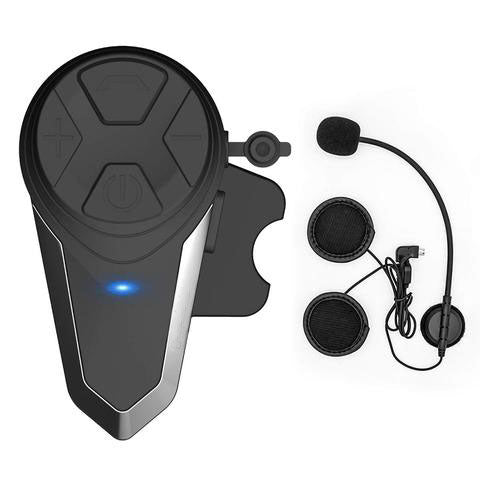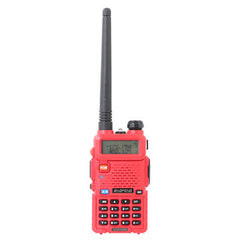
Stop Teaching with Radios! Evolve your Instruction
Share
No...I am not encouraging instructors to DECREASE their communication with their students. ...but imagine there is something much better out there.
I have only been teaching hang gliding since 2010 but I am so glad to not be "burdened" with old, outdated methods and equipment. Sure, tonnes of people have taught and been taught with older gear successfully over the decades but I hope any instructor (of any skill) will be open to improving their methods and improving their gear.

I used radios from the onset of instructing. I was on a budget when I started this school so I used $15us FRS (family band radios) - they were brutal! They were fine at launch but the range and clarity were brutal - too unreliable.
I then switched to inexpensive ($30us) Baofeng 2m HAM radios. WAY better range, way better rechargeable batteries....but still had the issues with
- where to mount them close to the pilots' ears?
- once they got flying, could they actually hear?
- would the radio fall off?
- I teach via scooter tow, so the student would hear the engine running and distort what they heard
- it is push-to-talk so I have my hands full with winch operating
- radios would time-out on some models if you hold the button too long
- DAMNED wind noise...
- and the big one...it is only one-way communication. The student pilot can't talk back (feasibly)
- licensing....you do legally need to have an amateur radio license to transmit using them....students listening in isn't a problem. But try to use your radio etiquette while teaching!!
 The evolution started being an issue when we were step-towing where communication is critical. We used wired headsets to our cell phone so the pilot could talk to the winch operator. Problems with that:
The evolution started being an issue when we were step-towing where communication is critical. We used wired headsets to our cell phone so the pilot could talk to the winch operator. Problems with that:
- DAMNED wind noise!!! Ground communication was fine but as soon as the pilot launched, the winch operator couldn't hear the pilot's commands.
- the wire...once again, fine on the ground but once the pilot would start moving, more often than not, the wire would pull the ear pieces out of their ears. So much for the pilot hearing the winch operator (we still used leg signals)
- DAMNED wind noise! (can you see a pattern here...) We added a wind-screen to the mic...sometimes it would work but many pilots would show up unprepared and try flying without a wind-screen....taking their safety into their own hands....they learned when they would have to release prematurely when they couldn't communicate with the winch operator
- wired headsets were cheap ($10us)....but they would get destroyed so quick in this nasty environment. I had to buy tonnes of cheap ones to keep on hand as they were getting pulled apart
 The obvious solution....BLUETOOTH!!! Duh - everyone has bluetooth on their mobiles these days and unlimited talk and long-distance on their plans that no one minds using their phones....heaven forbid use them to TALK!! Now the pilot and student can stash their phones away in the harness...no more wires.
The obvious solution....BLUETOOTH!!! Duh - everyone has bluetooth on their mobiles these days and unlimited talk and long-distance on their plans that no one minds using their phones....heaven forbid use them to TALK!! Now the pilot and student can stash their phones away in the harness...no more wires.
We played around with a couple solutions but finding cheap $30us bluetooth headsets that worked with helmets wasn't easy. People tried using the cheap ones people walk around the streets with but try putting that in a helmet - especially a full-faced hang gliding helmet - the earpiece would kill your ear and you would have no access to the buttons.
There are some cheap and slim Bluetooth solutions that slip inside the helmet nicely. The action button is on the boom of the mic so accessible to the pilot but the issue of the DAMNED wind noise still persisted as well when pilots opted for these cheap bluetooth headsets, the issue of the winch operator or instructor hearing wind noise was deafening. And the pilot would also hear the winch engine running as well.
THE Solution
 I finally found THE solution and have been using these for the past five years. I am not the pushy type but regret not advertising to the hang gliding community more because they truly have improved my instructing. The word got out to a couple other local schools naturally and am pleased that they improved their methods and started using them as well.
I finally found THE solution and have been using these for the past five years. I am not the pushy type but regret not advertising to the hang gliding community more because they truly have improved my instructing. The word got out to a couple other local schools naturally and am pleased that they improved their methods and started using them as well.
I import them in batches and sell them on this site here. They are made for motorcyclists and are IDEAL!!! and only $56us

- they come with very slim earpieces (replacements/spares are $18us) that slip into any full-faced helmet nicely. Very similar to the 2m radio headsets we fly with.
- for open-face helmets, the ear-pieces do velcro to the helmet nicely.
-
 comes with a boom mic - easily attached with velcro to open or full-faced helmets. The foam windscreen works nicely too
comes with a boom mic - easily attached with velcro to open or full-faced helmets. The foam windscreen works nicely too - USB rechargeable with batteries that last a LONG time
- detachable module that sticks via velcro on the outside of the helmet
- nice big buttons to press while flying (if need be), even with gloves on
IMPROVED SAFETY
The key parts that has improved the safety of our teaching are
- not using a radio frees my hands up to operate the winch and cut a tow line should I ever need to
- TWO-WAY communication with my student. I get feedback FROM the student during a flight. The quality is so clear, I can hear their breathing to detect if they are stressing out! I can also hear their vario and can help them figure out thermalling
- it is cell based, so I can't say that calls don't get dropped as they do. But a quick long-press of the button from my end can redial and if the student has their cell phone bluetooth's setting to auto-answer, it will reconnect without the student doing anything
The KEY feature for improved communication though is that these are electronic NOISE CANCELLATION. I can't stress enough how important this is. From the winch-operator's end, it cuts out the winch noise that the pilot hears. Our big-winch uses a diesel engine - it eliminates that 100%. From the pilot's end, it cuts out ALL wind noise so the winch-operator/instructor hears NONE of it. They are SOOO quiet, we often have to ask each other if they are still there!! We now REQUIRE our step-towing pilots to use them as communication is critical.
We have spare ear pieces as well as we leave them attached to student helmets and they just plug in one of our bluetooth modules when they arrive for training. Most pilots buy their own later on and we do aerotow training with them on as well - the tug pilot can talk to the pilot. We can even call each other while airborne and work on thermalling.

IMPROVED EFFICIENCY
It is also UBER efficient training with them on all students. Our time out training is valuable with our short Canadian season and it being a part-time endeavour - we need to make the most of all sessions. With having an open-mic, we have full conversations and can be very discriminating on style/positioning/process at every step of the process.
We keep our flight planning simple with students, but there are often times that we can add tasks during a flight if the opportunity arises. Something I wouldn't feel comfortable doing over the radio as, with these headsets, I can get verbal confirmation back from the student.
 Student can ask questions at ANY time which improves their comfort level immensely. I have had some one-on-one sessions where we have done a single phone call for the entire session and have done 13 circuit tows in 1h15 and talked and critiqued the flights the entire time...all while I was driving a dirt bike to do the line retrieval - with crystal clear, no background noise to get in the way. I have a simple ear-protector with one of these mounted to.
Student can ask questions at ANY time which improves their comfort level immensely. I have had some one-on-one sessions where we have done a single phone call for the entire session and have done 13 circuit tows in 1h15 and talked and critiqued the flights the entire time...all while I was driving a dirt bike to do the line retrieval - with crystal clear, no background noise to get in the way. I have a simple ear-protector with one of these mounted to.
We also do conference calls with them when we are teaching new winch operators so they can hear what a conversation sounds like while towing while watching the winch operator. Or when a pilot is learning to step-tow, they can do the same. They hear 100% of both sides of the talk. We just get them to mute their mic so they can't interfere.
The other cool feature that they have is an intercom feature. You can pair them with others and, without using cell phones, you get all the same features as above. The spec say it works with a 2km range but it does get staticy after about 600m - still clear talking, just some background static. So I wouldn't recommend instructors using the intercom feature if sending students off of a high mountain launch and expect great communication right down to the LZ.
 This year, they just came out with the third generation of them. I don't see any feature/quality difference between the two versions - we have been using the v3 all this season. They are just in a sleek new case. They even do the intercom pairing with the v2 just fine.
This year, they just came out with the third generation of them. I don't see any feature/quality difference between the two versions - we have been using the v3 all this season. They are just in a sleek new case. They even do the intercom pairing with the v2 just fine.
We do import them in in bulk and try to have some stock available. Hopefully you will support our business by buying from us. We don't mark them up much and our prices are inline with other online resellers and every buck helps keep our hang gliding school going!
 I have 5 units in use for teaching as we put one on each student out at that session so we can easily call each student between flights. So they are a bit of investment but they have certainly paid for themselves in spades...if not for the added safety but for the added efficiency getting our students through their training faster and with higher confidence.
I have 5 units in use for teaching as we put one on each student out at that session so we can easily call each student between flights. So they are a bit of investment but they have certainly paid for themselves in spades...if not for the added safety but for the added efficiency getting our students through their training faster and with higher confidence.


